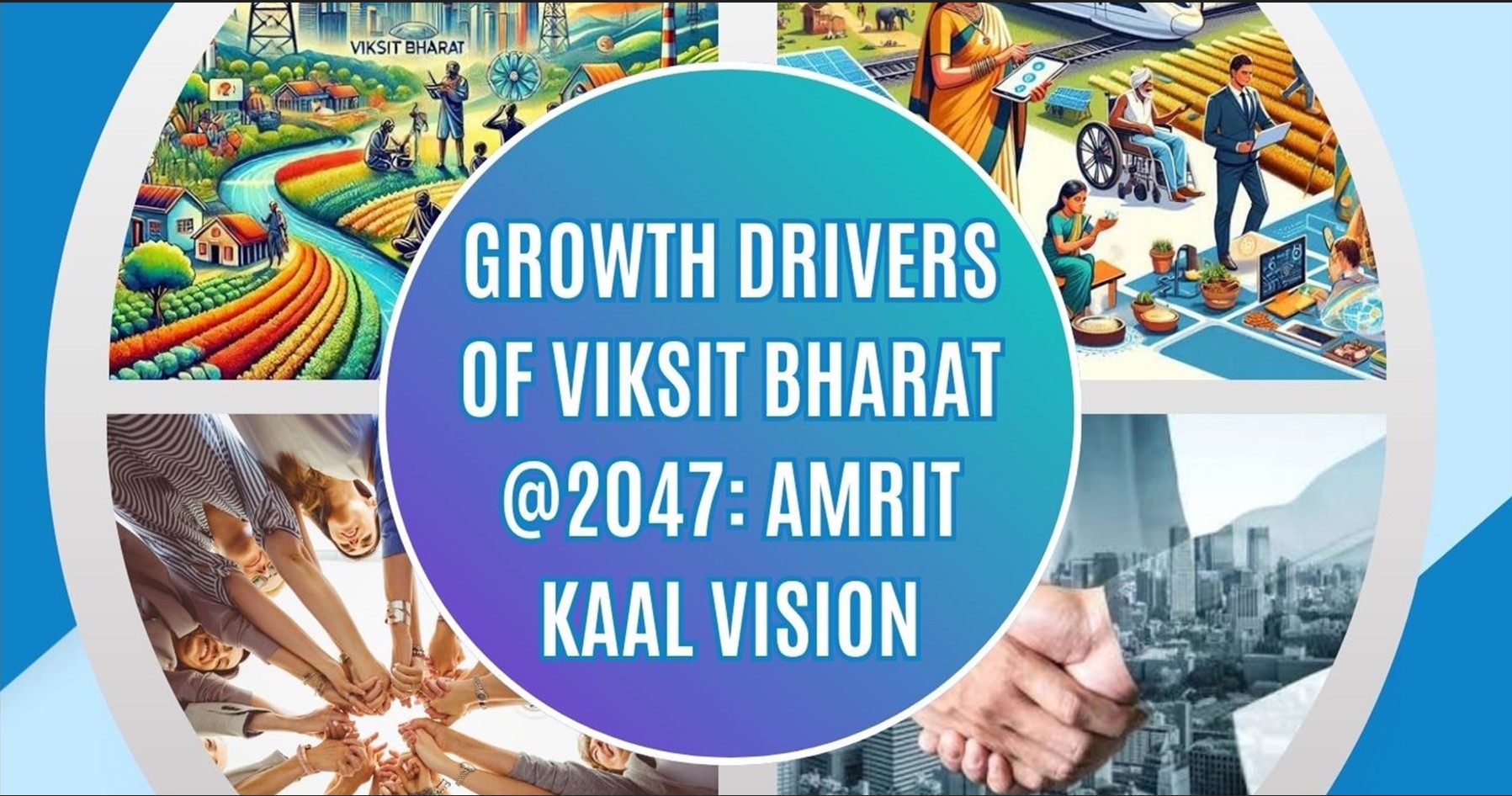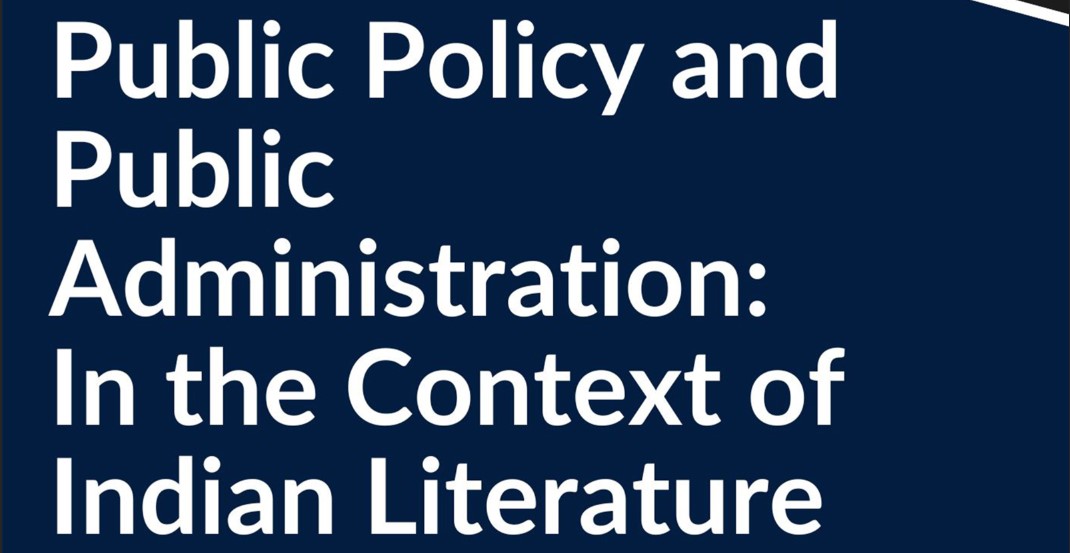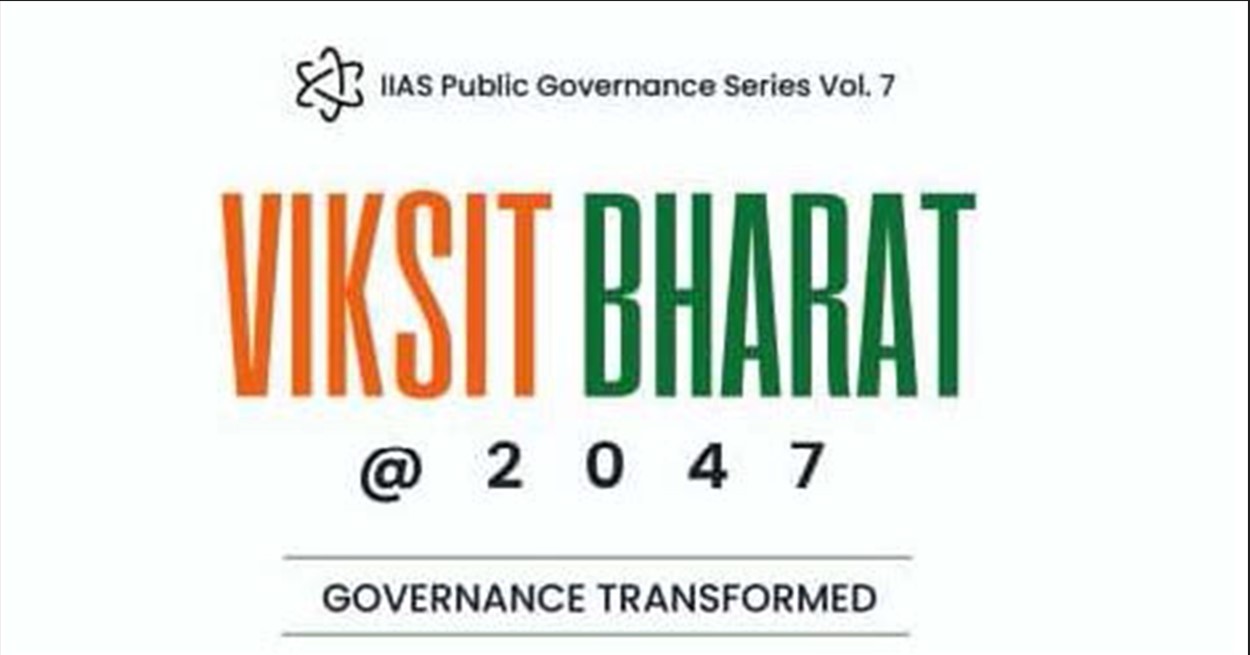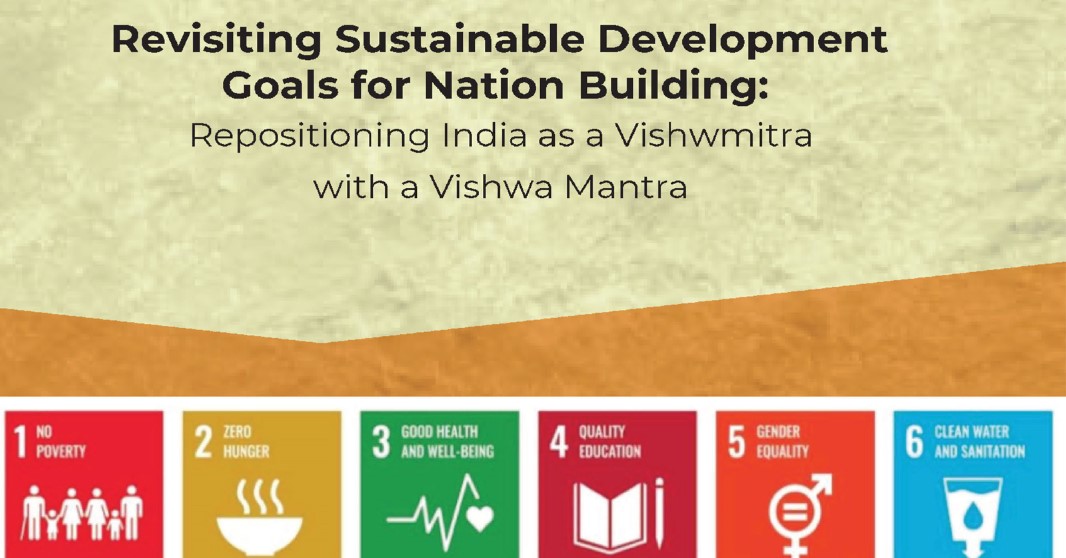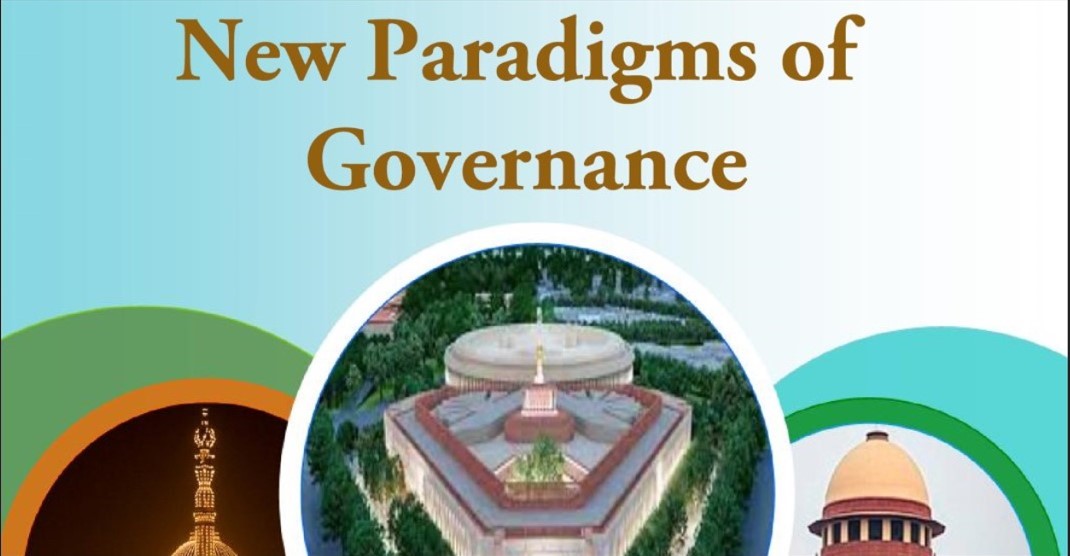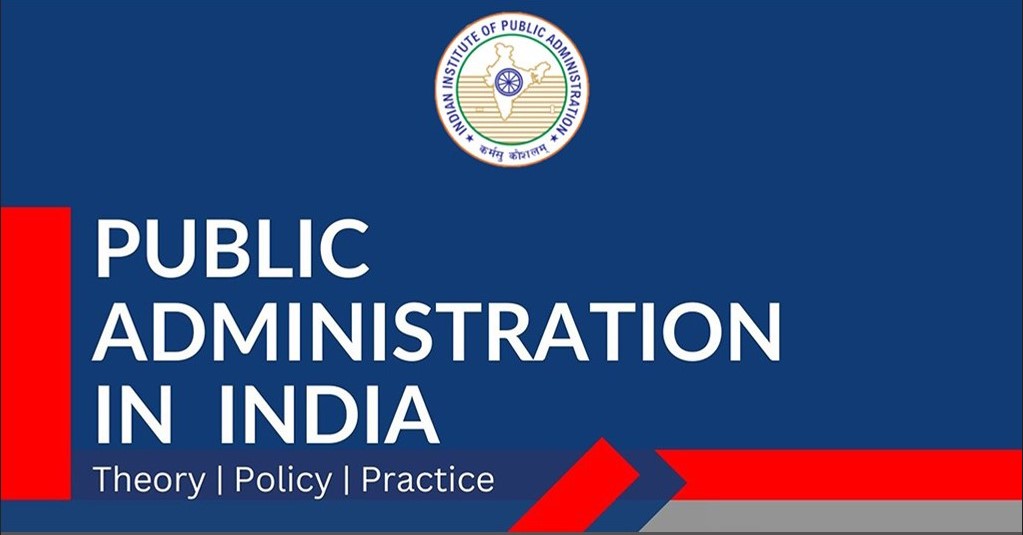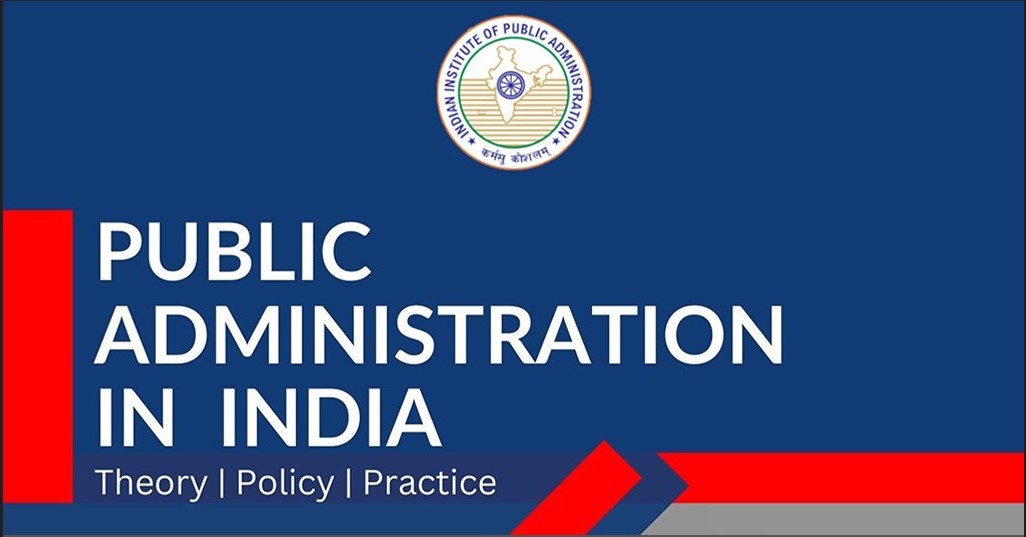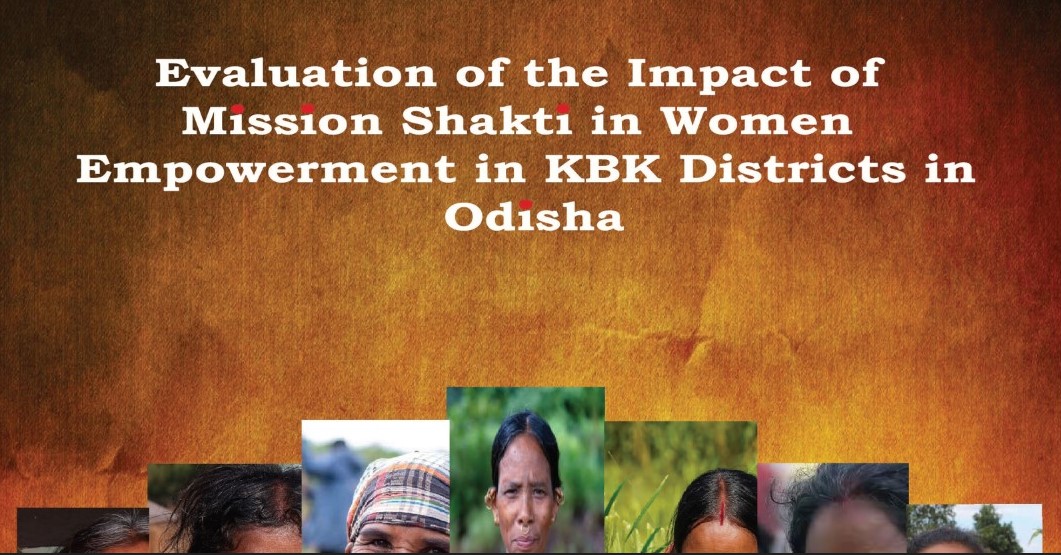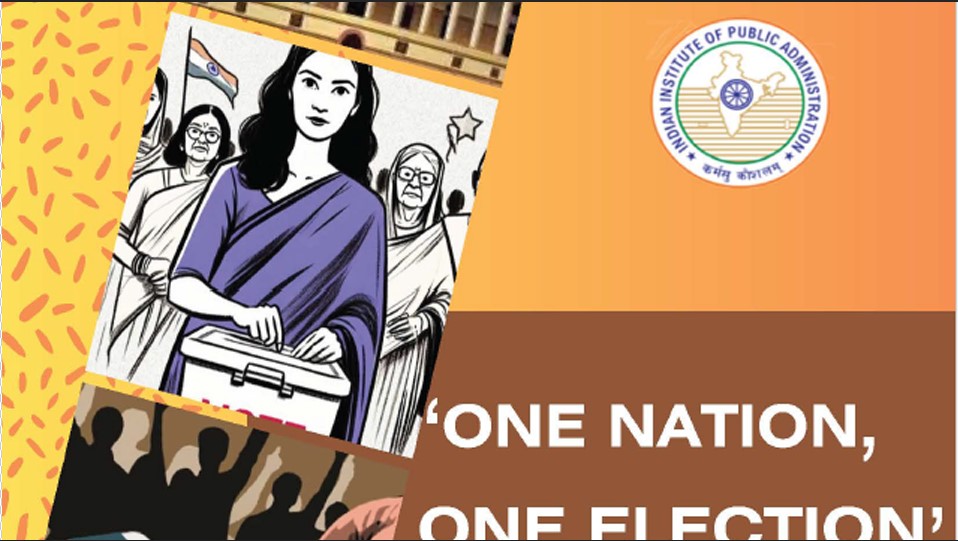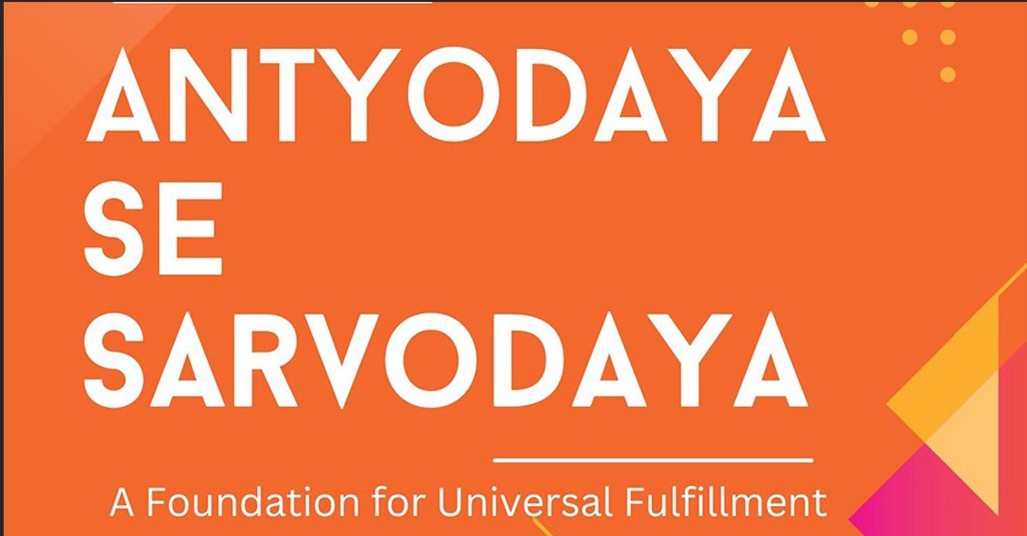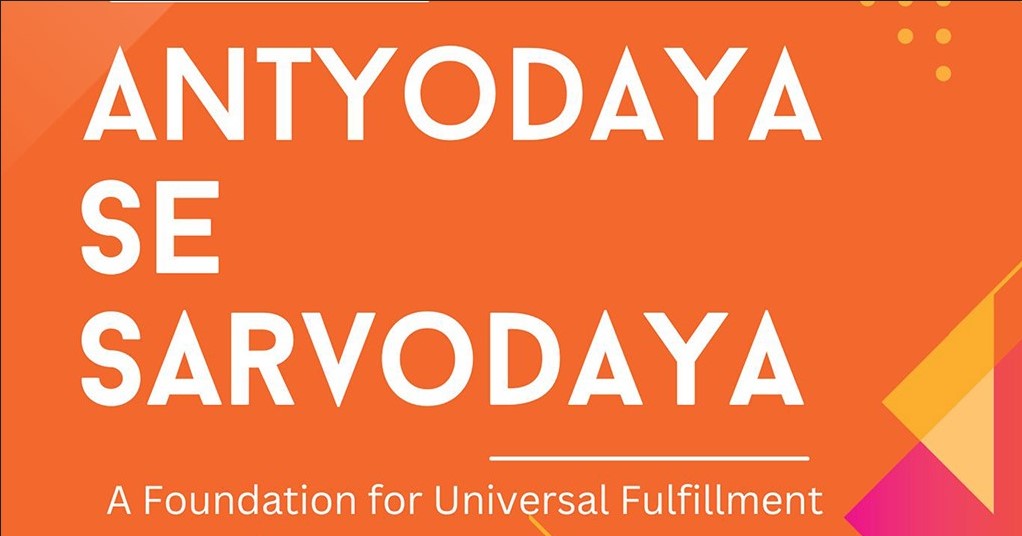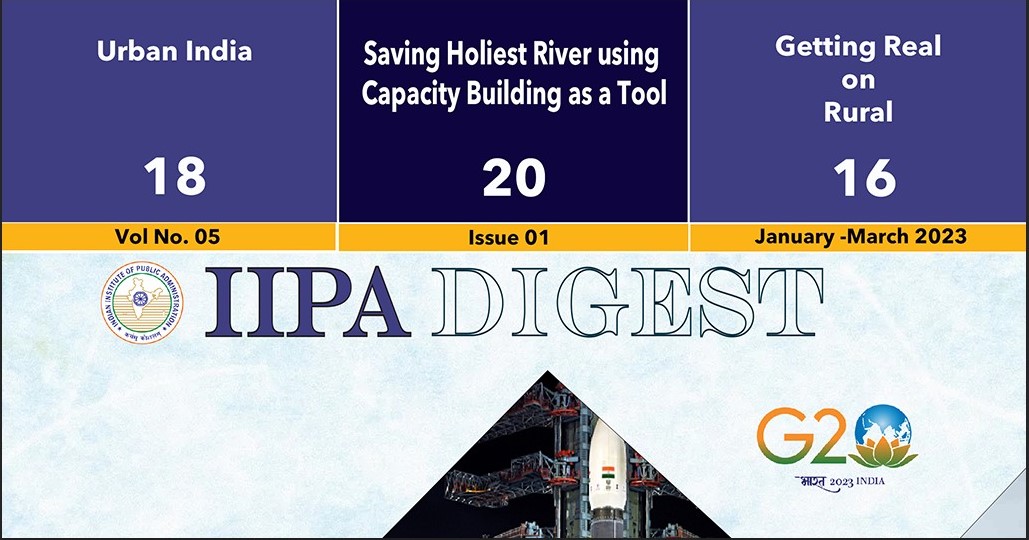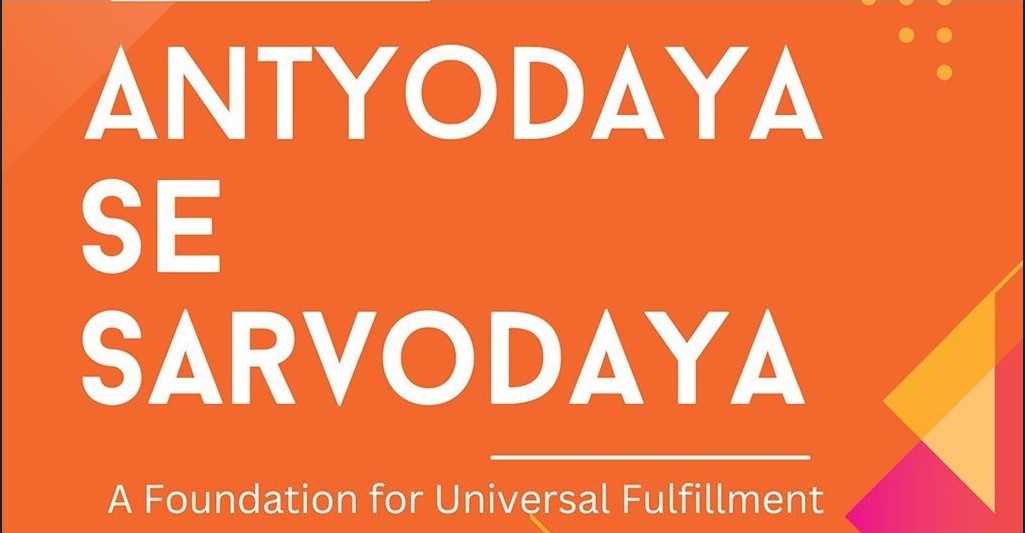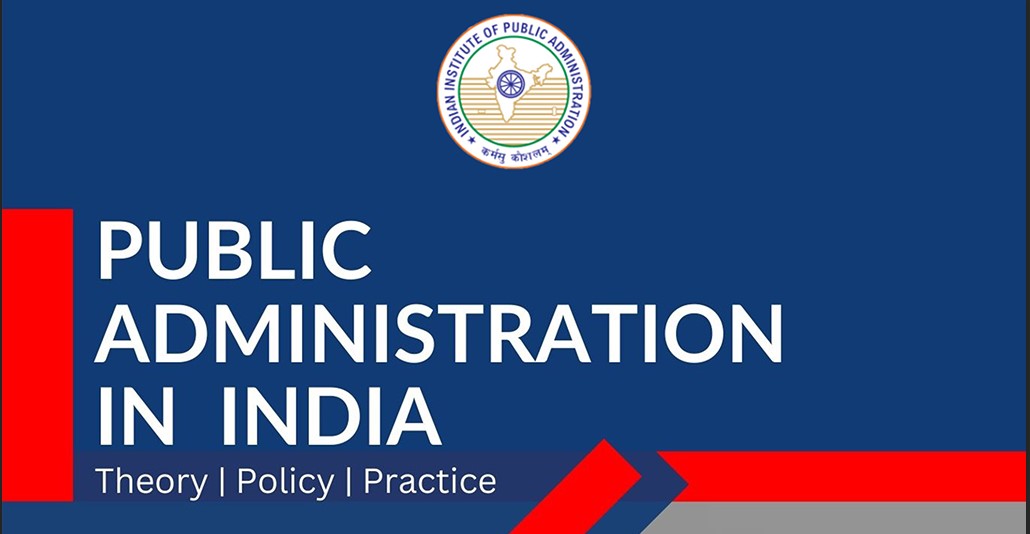Transformation Journey of Digital Bharat
Abstract
In India, digital transformation has become a key component of economic and social advancement, which was launched in 2015, profoundly changing how individuals, corporations, and government agencies use technology. India's digital economy is seeing tremendous growth due to the country's increasing adoption of mobile internet and developments in digital infrastructure. India’s digital economy already touched more than $1 trillion in the year 2022. India would be $10 trillion economy by 2030, and half of it would be the digital economy. The government's dedication to creating a society that is inclusive of digital technology is demonstrated by initiatives like Digital India and the growth of fintech, e-governance, and smart cities. Indian businesses are using digital technology to improve consumer experiences, operational efficiency, and innovation, especially in industries like retail, finance, and healthcare. This shift is being driven by technologies like Internet of Things (IoT), blockchain, cloud computing, and artificial intelligence (AI), which improve data-driven decision-making and automation across sectors. However, issues including cybersecurity risks, a lack of digital literacy, and regulatory barriers still exist and require cooperation from both the public and commercial sectors. India's digital future seems bright despite these obstacles, as seen by rising funding for IT firms and programs aimed at developing digital skills. This essay examines India's digital transformation's main forces, advantages, and difficulties while showcasing the nation's use of technology to further its position as a worldwide digital leader.
Keywords: Artificial Intelligence (AI), Fintech, Internet of Things (IoT), E-Governance, Digital India, Digital Transformation, Technology Adoption.
1.Introduction
The term "digital transformation" describes how digital technology is incorporated into all facets of business and society, radically changing how companies function and provide value to their clients. Digital transformation is changing many facets of economic, social, and political life in India, a nation with a booming technology sector and a quickly growing digital ecosystem. This thorough summary examines the main components of India's digital revolution, as well as its causes, obstacles, effects, and potential future developments. The digital revolution in India is a major step towards a technology-driven economy that is altering the availability and provision of services across numerous industries. Thanks to government initiatives like Digital India and innovations like UPI and Aadhaar, the country is rapidly adopting digital tools and platforms. This change includes advancements in mobile, cloud, and artificial intelligence technologies, which are driving growth across a range of sectors, including agriculture, banking, healthcare, and education. India's growing internet usage and increasing digital infrastructure are paving the way for a more effective and inclusive digital future, even though problems like cybersecurity and the digital divide still persist.
1.1 India's Digital Transformation Landscape
The digital transformation path of India has been influenced by multiple variables, including technical breakthroughs, market demands, and government policies. The country is a fertile ground for digital innovation because of its large population, rising internet penetration rate, and youthful demographic. Knowledge economy and society that is enabled by technology. Its main objectives are to improve digital literacy, e-governance, and internet infrastructure.
The digital transformation landscape in India is characterised by government-driven efforts and the swift adoption of new technologies. Important elements include the Digital India initiative, which improves digital services and infrastructure, and breakthroughs like Aadhaar and UPI, which transform payments and identity. Cloud computing, AI, and mobile technologies are all causing industries like finance, healthcare, and education to develop. Even with ongoing obstacles like cybersecurity and the digital divide, India's thriving startup scene and rising internet usage are driving further advancement. In the digital age, this change is propelling financial inclusion, industry revolution, and economic expansion.
Initiatives like Aadhaar, the distinct digital identification program, have strengthened the digital revolution by giving millions of people access to financial inclusion and necessary services. In April 2023, Aadhaar holders completed over 2 billion authentication transactions, representing a rise of over 19% over April 2022. This suggests that the digital economy and Aadhaar usage in Bharat are expanding. Even the most remote regions of the nation are getting high-speed internet connectivity so that residents may use digital services. By October 31, 2023, there will be over 888 million broadband customers in India. India has 5,90,020 Common Service Centres (CSCs), of which 4,68,773 are located in rural areas. The country is attempting to close the digital gap. An active digital economy is supported by this connectedness, which encourages entrepreneurship and innovation.
1.1.1 Proposals from the Government’s Initiatives
By implementing numerous significant programs, the Indian government has significantly contributed to the acceleration of the digital transition.
Aadhaar
A vital component of India's digital infrastructure, the Aadhaar project assigns residents a unique identity number based on biometric and demographic information. It simplifies procedures and lowers fraud while making a variety of services and benefits easier to obtain.
UPI Interface (Unified Payments Interface)
In 2016 UPI interface, introduced by the government for a quick, easy, and safe way to conduct transactions, completely changed the landscape of digital payments. In India, it has greatly increased digital payments and financial inclusion.
E-Government Initiatives
To increase accessibility, efficiency, and openness of government services, initiatives including e-Courts, e-District, and the National Digital Health Mission are being implemented.
E-Courts
India's E-Courts Initiative seeks to digitise the legal system to increase accessibility, effectiveness, and transparency. It was introduced as part of the National e-Government Plan (NeGP) to automate the legal system to deliver justice quickly and affordably. The initiative's main goals are to give litigants internet access to case material, to help them file lawsuits, and to monitor their progress. Automated case management solutions save paperwork and delays for courts, attorneys, and judges. Additionally, it incorporates computerised filing systems and video conferencing to minimise in-person appearances and enable distant hearings, fostering a more contemporary and inclusive judiciary.
E-District Plan
The National e-Governance Plan (NeGP), which includes the E-District program in India, aims to provide district-level electronic government services to residents. Its main goals are to automate the district administration's backend procedures and provide online services for things like licenses, permits, and certificates. Without having to visit government offices, residents may use this platform to get a variety of services, including income certificates, caste certificates, and land records. By reducing the time and effort required for administrative duties, the project seeks to improve service delivery, decrease corruption, and increase transparency. It also promotes effective governance at the local level.
National Digital Health Mission (NDHM)
The government of India started the massive National Digital Health Mission (NDHM), currently known as the Ayushman Bharat Digital Mission (ABDM), with the goal of digitising the healthcare sector. By giving each individual a distinct health ID, it seeks to establish an integrated digital health infrastructure that will enable them to access their medical information from different healthcare providers. Better continuity of treatment is ensured by this system since patient health information is accessible from anywhere at any time. In order to facilitate information sharing across hospitals, clinics, and diagnostic centres, the mission advocates for health data interoperability. In order to improve healthcare outcomes, accessibility, and delivery efficiency, NDHM also promotes the use of telemedicine, electronic health records (EHR), and digital health services.
1.1.2 Technological Developments
India's digital revolution has been greatly aided by technological advancements:
Mobile Technology
Access to digital services has been made easier in both urban and rural locations by the increasing use of smartphones and the growth of mobile internet. For millions of Indians, mobile apps, particularly in fields like banking, education, and healthcare, have become indispensable resources. India's digital revolution has been propelled by mobile technology, which has completely changed how individuals interact, transact business, and obtain services. Millions of individuals may now engage in the digital economy because of a widely available internet connection and reasonably priced cell phones. Accelerating financial inclusion has been done so by the introduction of technologies such as the Unified Payments Interface (UPI), which has made digital payments and mobile banking accessible. By enhancing access to e-commerce, agriculture, healthcare, and education, mobile apps have helped to close the gap between rural and urban areas. The popularity of mobile technology has increased thanks to government programs like Digital India, which have empowered people and companies. India's digital ecosystem is expected to undergo even more change with the introduction of 5G.
Cloud Computing
Businesses and government organisations may now scale their operations more effectively, save money, and improve service delivery thanks to cloud computing technologies. Cloud solutions are being used by Indian startups and businesses more and more for innovation and expansion. Without the need for actual hardware, cloud computing provides on-demand computer services over the internet, allowing customers to access and manage resources like servers, storage, and apps. It provides flexibility, cost-efficiency, and scalability, enabling companies to grow or shrink in response to changing requirements. Cloud computing transforms how we work and save information by employing remote data centres to support collaboration, increase productivity, and provide reliable data backup and recovery solutions.
Machine Learning (ML and Artificial Intelligence (AI)
These technologies are being used to analyse data, forecast trends, and automate procedures across several industries, including banking, healthcare, science and technology, and agriculture. Efficiency and decision-making are significantly improving because of these technologies. Our future is being shaped by revolutionary technologies like machine learning (ML) and artificial intelligence (AI). AI is the field of building artificial intelligence systems, whereas machine learning (ML) is a branch of AI concerned with giving machines the ability to learn from data and get better over time without explicit programming. When combined, they spur creativity in a number of domains and improve productivity, judgement, and customisation. To provide financial assistance to landowner farmers, the Indian government, in partnership with the EKstep Foundation, introduced an AI chatbot in September 2023 that was integrated with PM-Kisan, the country's direct benefit transfer program. With voice commands, this farmer-friendly bot may assist with eligibility checks, payment status updates, and grievance resolution. The fact that more than 5 lakh farmers utilised it on the first day shows how widely accepted AI is becoming in India.
By 2026, there will likely be a 3.5-fold increase in the gap between supply and demand for digital tech skills, making the next 25 years crucial for India's rise to prominence in both the economy and technology. MeitY has also established FutureSkills Prime in collaboration with the National Association of Software and Service Companies (NASSCOM) to address the expanding need for tech talent by offering cutting-edge skills necessary in the quickly changing digital landscape of today.
Figure 1: Digital Technologies Significant economic value in India 2025
Source: McKinsey Global Institute
1.1.3 Consumer Behaviour and Market Demands
Indian customers are adopting digital technology at an accelerating rate due to various factors, including:
Increasing Internet Penetration
India is home to more than 700 million internet users, making it one of the world's biggest online markets. The quick rise in digital consumption has been facilitated by the expansion of reasonably priced data plan options. India's social, economic, and technological landscapes have changed due to rising internet adoption. Bharat has more than 800 million internet users, making it among the largest online markets in the world, thanks to reasonably priced smartphones and inexpensive data plans. Both urban and rural communities have benefited from this upsurge in access to digital services, including e-commerce, healthcare, and education. By connecting rural areas, programs like Digital India and Bharat Net aim to reduce the digital gap even more. Fintech, online entertainment, and e-governance have all flourished as a result of the internet's explosive growth, making India a major player in the global digital economy.
E-commerce Boom
With a vast array of goods and services at consumers' fingertips, e-commerce platforms such as Flipkart, Amazon India, and Paytm Mall have completely changed retail. Due to growing smartphone usage, a shift in consumer preferences, and fast internet penetration, India's e-commerce boom has completely changed the retail scene. This expansion has been fuelled by major firms like Flipkart, Amazon India, and Myntra, which provide a wide range of products, from fashion to electronics, with the ease of home delivery. The emergence of e-commerce platforms has made it easier for people in remote places to purchase online and take advantage of reasonable prices and a wide selection of products. The growth in e-commerce has been further helped by government efforts like Digital India and improvements in logistical infrastructure. Additionally, the COVID-19 pandemic has expedited the shift towards online buying. Because of this, e-commerce today plays a big role in the Indian economy, stimulating innovation and generating new job opportunities. Notwithstanding obstacles like as cybersecurity worries and regulatory barriers, the industry's development trajectory is robust, indicating that it will continue to grow and change in the digital era.
2. Industries Affected by the Digital Revolution
India is seeing several areas affected by digital transformation, which is improving accessibility, efficiency, and service quality.
Digital Payments
Convenience, security, and government incentives have led to an increase in the usage of electronic payment systems such as UPI, mobile banking, and digital wallets. The adoption of electronic payment systems has surged, of digital payments have completely changed the way that transactions are carried out because they provide a quick, safe, and effective substitute for cash and credit cards. Thanks to developments like digital wallets, mobile banking apps, and the Unified Payments Interface (UPI), the use of digital payment methods has increased dramatically in India. The 2016 introduction of UPI, which allows for instantaneous bank-to-bank transfers via an easy-to-use mobile interface, has significantly changed the payments market. This has decreased transaction costs and fraud while also speeding up financial inclusion.
Users now find it simpler to keep and spend money electronically for a variety of activities, including paying utility bills and making online purchases, thanks to digital wallets like Paytm, PhonePe, and Google Pay. Bank-provided mobile banking apps come equipped with functions including investment management, bill payment, and financial transfers. Growing smartphone penetration and government initiatives enable the widespread adoption of these technologies. But issues like cybersecurity risks and a lack of digital literacy still exist. In spite of this, digital payments are expected to keep growing quickly, promoting more financial inclusion and economic efficiency.
2.1 Financial Services and Banking
Digital technologies have brought about a dramatic revolution in the Indian financial sector; India’s digital economy will touch $1 trillion by the year 2022. India would be $10 trillion economy by 2030, and half of it would be the digital economy.
Financial Inclusion
Underserved and rural communities now have access to a wider range of financial services thanks to digital banking and payment options. The aim of initiatives such as the Pradhan Mantri Jan Dhan Yojana (PMJDY) is to provide financial services to all citizens. India's financial industry has seen a shift due to digital technology, especially in the area of financial inclusion. Millions of people, even those living in rural areas, now have access to financial services thanks to platforms like the Unified Payments Interface (UPI), mobile banking, and digital wallets. The unbanked can now access banking thanks to government programs like the Jan Dhan Yojana, and Aadhaar-enabled services have sped up identification verification, allowing for quicker account and credit opening. Fintech developments have made it easier for people and small enterprises to engage in the formal economy by streamlining loans, payments, and investing processes. The smooth incorporation of digital payments has improved accessibility, simplicity, and transparency, dramatically altering India's financial environment.
Fintech Innovations
By providing services like peer-to-peer lending, robo-advisors, and blockchain-based solutions, fintech businesses are upending traditional banking. The accessibility and transparency of finance are being improved by these developments. India's financial system has seen a revolutionary change thanks to fintech innovation, which has increased service accessibility, effectiveness, and inclusivity. The increasing use of digital payment services such as Paytm, PhonePe, and UPI has made transactions easier, leading to a greater acceptance of cashless transactions. Digital lending platforms, robo-advisors, and peer-to-peer lending have made credit and investing opportunities that are more widely available. Through their ability to reach underprivileged groups in rural locations, fintech innovations have also promoted financial inclusion through digital wallets and mobile banking. Fintech growth has been spurred by regulatory support and initiatives like Aadhaar and India Stack, which have created a vibrant ecosystem that is changing India's financial landscape and advancing economic development.
Regulatory Changes
To facilitate digital financial services, the Reserve Bank of India (RBI) and other regulatory organisations have created regulations. These include standards for data protection, cybersecurity, and digital payments. India has changed its regulations significantly in recent years in an effort to encourage the growth of digital financial services. To promote safe and effective payment systems, the Reserve Bank of India (RBI) has passed laws, including the Payments and Settlement Systems Act. The development of regulatory frameworks such as the Know Your Customer (KYC) requirements and the Unified Payments Interface (UPI) has allowed digital banking to flourish, which has made it easier for consumers and companies to access. Furthermore, by encouraging competition, the emphasis on fintech innovation has improved financial inclusion nationwide.
2.2 Healthcare/Medical
India's healthcare system is being revolutionised by digital transformation: Telemedicine: Remote consultations are becoming more common thanks to telemedicine platforms, which also lessen the need for in-person visits and provide access to healthcare, particularly in rural areas. The digital revolution in India's healthcare industry is improving patient outcomes, efficiency, and accessibility. Access to healthcare has improved because of telemedicine platforms, mobile health apps, and electronic health records, particularly in rural and isolated locations. The goal of projects like the Ayushman Bharat Digital Mission is to streamline services and enhance data management while establishing a national digital health ecosystem. Patient care is being revolutionised by digital health technologies, including wearables, online consultations, and AI-driven diagnostics. In addition, government initiatives and new businesses are promoting innovation, lowering costs, and expanding access to healthcare, closing gaps in the provision of treatment, and building a more integrated healthcare system in India.
Health Records
The National Digital Health The National Digital Health Mission aims to create a digital health ecosystem that includes electronic health records (EHRs) to improve patient information management and care quality. In Bharat, health records management is undergoing a digital revolution that will increase accessibility and efficiency. Ayushman Bharat Digital Mission and other similar initiatives seek to establish a digital health ecosystem that is uniform and easily accessible, with electronic health records (EHRs) securely kept. By facilitating smooth information exchange between healthcare practitioners, these digital records lower down on duplication and improve patient care. Through applications and online platforms, patients can now access their medications, test results, and medical history, improving transparency, efficiency, and patient-centeredness in healthcare throughout India.
Health Tech Innovations
New businesses and tech firms are creating cutting-edge solutions that enhance the effectiveness and results of healthcare, such as AI-powered diagnostics, personalised medicine, and health monitoring gadgets. Digital transformation is driving health tech innovation in India and changing the way healthcare is delivered. Healthcare is becoming more effective and accessible because of technologies like telemedicine, AI-powered diagnostics, wearable medical devices, and mobile health apps. Digital solutions are being integrated by startups and government efforts like the Ayushman Bharat Digital Mission, which aims to streamline data administration and improve patient outcomes. These advancements enhance healthcare accessibility, reduce costs, and foster a more technologically advanced, inclusive healthcare environment in India; these benefits are particularly advantageous in rural regions.
2.3 Education
The digital revolution is transforming India's educational system while simultaneously enhancing access and instruction quality. Students nationwide, even those in rural and underdeveloped areas, may now access high-quality education thanks to the growth of e-learning platforms like Khan Academy and Byju's. A multitude of digital resources and online courses are available through government projects such as SWAYAM, DIKSHA, and the National Repository of Open Educational Resources (NROER). Enhancing student engagement and personalising education are the goals of adaptive learning technology, virtual classrooms, and interactive tools. Professional development and teacher training are also made easier by digital platforms. By moving towards a digital education ecosystem, we are helping students become more inclusive, bridging barriers, and ready for the demands of the modern world. The Indian education sector is changing due to digital transformation:
Online Learning
Byju's, Unacademy, and Coursera are only a handful of the many platforms that have made excellent education and skill development resources more widely accessible, meeting a wide range of learning demands.
Ed-Tech Solutions
To raise the level of student engagement and outcomes, EdTech companies are utilising technologies like gamification, VR, and AI to provide personalised and interactive learning experiences.
Digital Classrooms
The use of digital technologies and resources in educational institutions is enhancing teaching strategies, permitting distance learning, and promoting student-teacher cooperation.
2.4 Agriculture
Digital transformation is revolutionizing agriculture in India by enhancing productivity and efficiency. Technologies like precision farming, drones, and satellite imagery provide farmers with data-driven insights on crop health, soil conditions, and weather patterns. Mobile apps and platforms offer real-time information on market prices, weather forecasts, and expert advice. Government schemes and tech-driven startups are promoting digital tools and services, improving access to resources and financial support. This digital shift is fostering sustainable practices and boosting agricultural yields across the country. Agriculture is being significantly impacted by the digital transformation:
Precision Farming
With the help of technologies like drones, satellite images, and Internet of Things sensors, farmers can monitor crop health, maximise resource consumption, and increase yields.
Agri-Tech Solutions
To help farmers become more productive and make wiser decisions, startups are providing digital platforms for market access, financial services, and farm management.
Government Schemes
Efforts to integrate technology into agriculture, such as the Digital Agriculture Mission, promote research, innovation, and capacity building.
3. Obstacles and Difficulties
Despite progress, there are still issues with infrastructure, such as limited access to a reliable power supply and inadequate internet in rural areas. To guarantee broad accessibility and sustain digital expansion, these issues must be resolved.
3.1 The Digital Gap
With differences in internet access and digital literacy across urban and rural locations as well as between various socioeconomic categories, the digital divide is still a major problem. To ensure that the benefits of the shift to digital transformation are distributed fairly, closing this gap is essential.
3.2 Network and Infrastructure
Infrastructure problems still exist despite advancements, such as poor internet access in rural areas. Despite progress, there are still issues with infrastructure, such as limited access to a reliable power supply and inadequate internet in rural areas. To guarantee broad accessibility and sustain digital expansion, these issues must be resolved.
3.3 Data privacy and Cybersecurity
Data privacy and cybersecurity issues are intensifying as more people utilise digital technology. Retaining trust in digital systems requires tackling cyber risks, ensuring strong security measures, and safeguarding personal data.
3.4 Talent Acquisition and Labour Market Shift
The swift advancement of technology demands constant skill improvement and upskilling. Leveraging the full potential of digital transformation requires addressing the skills gap and educating the workforce for digital roles.
4. Future Prospects and Opportunities
The future of digital transformation in India holds promising prospects, driven by ongoing technological advancements and evolving market needs.
4.1 Emerging Technologies
5G
The rollout of 5G technology is expected to enhance connectivity, enable new applications, and drive innovations in fields such as IoT, smart cities, and autonomous vehicles. Tech behemoths are realising that India's digital industry has enormous potential. By 2025, Google plans to contribute $10 billion through the Google for India Digitisation Fund to assist MSMEs in digitising their business processes. As part of its AI Odyssey effort, Microsoft will train one lakh developers in Bharat in the newest AI tools and technologies. The business plans to invest INR 16,000 Cr to build three additional data centres in Telangana, increasing the total number of projected Microsoft data centres in India to six. This is in addition to its first dedicated data facility, which will consist of three campuses in early 2022.
Blockchain
Blockchain technology has the potential to revolutionise sectors such as finance, supply chain management, and healthcare by providing secure and transparent transaction systems. India's digital transformation is being propelled by blockchain technology, which improves productivity, security, and transparency in a number of industries. Blockchain's secure, unchangeable ledgers simplify transactions and lower fraud in the financial industry. To ensure data integrity and traceability, the technology is also being used in real estate, healthcare, and supply chain management. Blockchain is being investigated by entrepreneurs and government projects for voting systems and digital identity management. Blockchain is positioned to revolutionise India's digital landscape by promoting trust and eliminating middlemen.
Quantum Computing
Even though it is still in its infancy, quantum computing has the potential to revolutionise several sectors by providing sophisticated solutions to challenging issues and enabling breakthroughs in fields such as cryptography and material science. Due to its unparalleled processing capacity and ability to solve complicated problems beyond the capabilities of traditional computers, the potential of quantum computing is enormous to have a substantial impact on India's digital transformation. It could lead to innovations in industries including medication development, optimisation, and cryptography. To advance this technology, Indian tech corporations and research institutes are investing in quantum R&D. India hopes to stimulate creativity, improve data processing capacities, and keep a competitive edge in the global tech market by utilising quantum computing.
4.2 Smart Cities and Urbanization
The development of smart cities is a key focus area, with initiatives aimed at leveraging technology to improve urban infrastructure, enhance quality of life, and promote sustainable development. India's digital transformation is centred on smart cities and urbanisation, which seek to improve urban living through data-driven solutions and technology. The goal of projects like the Smart Cities Mission is to enhance infrastructure, services, and governance by combining IoT, AI, and data analytics. To increase productivity and sustainability, technologies including automated waste management systems, smart grids, and intelligent traffic management are being used. Better public participation and service delivery are made possible by digital platforms. These solutions are essential for managing growth, enhancing quality of life, and building resilient, linked urban settings throughout India as urbanisation picks up speed.
4.3 Innovation Ecosystem
India's growing startup ecosystem, supported by venture capital, incubators, and government initiatives, is fostering innovation and driving digital transformation across various sectors. India's digital transformation innovation ecosystem is thriving due to a diverse range of government programs, IT clusters, and entrepreneurs. Innovation in fintech, blockchain, and AI is fuelled by an expanding talent pool, R&D investment, and supportive policies. This dynamic atmosphere makes India a global leader in technology by promoting creativity and accelerating technical advancement.
4.4 Global Collaboration
India's digital transformation is increasingly interconnected with global trends and partnerships. Collaboration with international organizations, technology companies, and research institutions can enhance knowledge sharing and drive innovation. With these partnerships that offer global experience and resources, India's digital journey is set to make enormous strides. India's digital journey is anchored by expanding digitisation demands, talented tech people, an enabling regulatory environment, and world-class infrastructure.
Figure 2: India Tops Digital Payments in 2022
Source: MyGov India
Instant personal and merchant payments are made possible with UPI, India's widely used mobile-based real-time payment system. It handles more than 75% of the nation's retail digital payments, with more than 14 billion transactions recorded in May 2024 alone. With its full compatibility, UPI has genuinely democratized payments in India, giving every Indian with a mobile device access to financial services. As an architecture framework with a set of common Application Programming Interfaces (APIs) that make integration simple, UPI has grown to be a major player in India's digital economy. Its real-time capabilities guarantee quick fund transfers, and its interoperability improves financial access. Additionally, NPCI uses a merchant-deployment approach that is affordable and facilitates the growth of merchant networks.
At the ecosystem level, the Reserve Bank of India (RBI), the regulatory body, gradually guides NPCI in adopting an ownership and governance model led by the industry. It operates under the tenets of inclusivity and cooperation among ecosystem members, fostering innovation via its platform-centric methodology. With over 77 mobile applications, the UPI ecosystem is vast and includes players like BHIM, Phone Pay (supported by Walmart), Amazon Pay, WhatsApp, Google Pay, and Amazon Pay. The vast reach and usability of the UPI architecture are further enhanced by the integration of over 550 institutions. Notably, person-to-merchant (P2M) transactions have been steadily increasing; by May 2024, they will account for almost 62% of all transactions.
5. Possibilities for Interested Parties:
Customers
UPI makes banking more accessible by allowing for instantaneous, round-the-clock transactions at almost no cost. It increases financial accessibility by supporting a variety of transactions, from microtransactions to high-value payments.
Retailers
UPI reduces risk and boosts customer trust by making it easier for retailers to accept payments straight from a customer's bank account without requiring them to handle cash or keep sensitive customer data. The expanding market reach and increased volume of transactions are advantageous for Payment Service Providers (PSPs). Because of UPI's framework, they can innovate on top of its infrastructure to create unique payment solutions that cater to a variety of market demands. Person-to-Person (P2P), Person-to-Merchant (P2M), Request-to-Pay, UPI on Delivery, Standing Instructions, IPO investments, and other use cases are among the many that UPI enables.
To name a few, request-to-pay makes transactions simpler by allowing people or businesses to ask for money from payers using UPI. UPI allows auto-debit for utilities, entertainment subscriptions, and other services with recurring payments. In order to conduct secure transactions without using the physical card, users can now link their RuPay credit card to UPI applications. Furthermore, Indians can currently make certain international payments to merchants in Bhutan, France (e-commerce), Mauritius, Nepal, Singapore, Sri Lanka, and the United Arab Emirates (UAE) using UPI. By guaranteeing that all Indians have access to digital payment choices, UPI seeks to make the country a "less cash" culture by offering a safe and easy way to make payments. In the rapidly expanding digital landscape, certain clients could fall prey to con artists using social engineering techniques. Even though the NPCI and banks have strengthened the UPI ecosystem with several security layers and run widespread fraud awareness efforts to safeguard users, fraud instances are usually caused by avarice, coercion, or requests for assistance.
Through the implementation of comprehensive fraud prevention and detection measures that include everything from UPI registration to transaction operations, NPCI assures the security of the UPI payment system throughout the user lifecycle. The last six digits of the debit card and a one-time password are used as an out-of-band factor of authentication to link the user's device and mobile number to the bank account in the first layer of security. In the second layer of security, a four- or six-digit UPI PIN is generated to authenticate each transaction using the registered mobile device. In addition, NPCI works with a variety of partners, government organisations, member banks, law enforcement, and other stakeholders to carry out public awareness campaigns about security procedures. Together, these initiatives greatly improve UPI's security, fostering its expansion and preserving its secure standing.
6. Economic Development in India is Revolutionised by Digital Transformation
India's small enterprises have historically had difficulty obtaining official financing. Ninety-two percent of them did not have access to such information even prior to the COVID-19 epidemic. The loan gap facing India's micro, small, and medium-sized firm (MSMEs) sector is substantial, ranging from $250 billion to $300 billion. This is because larger businesses and those with physical assets have more access to loans. As a result, it becomes difficult for MSMEs and uncollateralized individuals to get loans. Even when a lender is found, the terms and circumstances of the loan are sometimes unfavourable or do not address their particular demands. The implementation of Account Aggregator (AA), a novel architecture in India, has the potential to completely transform the country's credit system by facilitating access to formal financial institutions for individuals and companies with less than ideal credit histories or asset-backed collateral.
i. Digital Public Infrastructure (DPI): Understanding the India stack, a Digital Public Infrastructure (DPI) created through a public-private partnership, is crucial to appreciating the significance of AA. Institutions and organisations can offer a variety of services by utilising DPIs, which are open standards and specifications, digital building blocks that are interoperable. The India stack, made up of three interconnected layers, gives every Indian a digital identity and makes simple, free, mobile-first digital transactions possible. The AA architecture has been constructed upon these levels as its base. The stack operates an architecture that is expected to turbocharge India's credit environment by utilising the ecosystem each tier creates. Before 2010, a great deal of Indians did not have any kind of official, trustworthy identity. Because of this, providing people with necessary services, especially in rural areas, became extremely difficult for both the public and commercial sectors. A unique identifying number issued by the Unique Identification Authority of India (UIDAI), the Aadhaar number was launched by the Indian government in 2010. In the nation's journey towards digital transformation, this was a turning point.
Figure 3: India among top countries globally in digital adoption
Source: Ministry of Electronics and IT, pib.gov.in
The 12-digit number known as "foundation," or Aadhaar, is a person's biometric identification. It consists of a person's name, age, gender, and residence address in addition to their biometric data (fingerprints and iris scan). The base of the India stack is Aadhaar. With Aadhaar, both the public and private sectors have been able to boost it has made it possible for both the public and private sectors to increase productivity and develop new goods and services. Just 25% of people had a formal form of identification prior to Aadhaar, and only 14% had bank accounts. In India, Aadhaar has completely changed the ecosystem for identification, taking the role of several official IDs, including voter IDs, PAN cards, ration cards, and passports. Aadhaar is widely used now, enabling millions of Indians to easily and quickly authenticate, so empowering the populace.
ii. Pradhan Mantri Jan Dhan Yojna (PMJDY): Under the Pradhan Mantri Jan Dhan Yojana (PMJDY), the Indian government has been pushing for zero-balance bank accounts, with over 450 million accounts expected to be opened by 2022. This goal has been made possible in large part by Aadhaar, which has made the KYC process easier and allowed the cost of e-KYC to be reduced from $12 to 6 cents. Millions of Indians now have access to banking, increasing financial inclusion and decreasing corruption in the poor's access to government services. Through direct benefit transfers, the government has transferred over $310 billion to over 6 billion people thanks to Aadhaar. This has been a huge accomplishment for India because it has allowed the government to provide a number of social welfare programs straight to the bank accounts of the recipients, preventing wastage and guaranteeing that the money goes to the right people.
Figure 4: Deposits under PMJDY
Source: Ministry of Finance, pib.gov.in
The second tier of the India stack was established by the 2016 introduction of the Unified Payments Interface (UPI), an instant payment system that supplied the DPI for payments made in the nation. Together with the Reserve Bank of India (RBI), public and private banks, and the Indian government, the National Payments Corporation of India (NPCI), a not-for-profit organisation run through a public-private partnership, established UPI. The wealthy in India were the primary users of previous payment methods like Rupay, NEFT, RTGS, NACH, VISA, and Mastercard, preventing less fortunate residents from benefiting from digital payment technologies. The best elements of all earlier payment systems and standardised payment procedures were combined to create UPI. To provide a round-the-clock, channel-independent payment system that can be accessed via mobile devices, the internet, ATMs, and Unstructured Supplementary Service Data (USSD) on entry-level phones with slow mobile internet connectivity, it made use of the Immediate Payment Service (IMPS). Additionally, an open Application Programming Interface (API) with immediate channel-independent service was made available by UPI's mobile-first implementation.
Unlike China's closed payment system, which is primarily controlled by private fintech firms like Alipay and WeChat Pay, UPI was created under the regulatory watch of the RBI, the nation's central bank. With 750 million users, smartphones have become increasingly popular in India. In 2016, Jio disrupted the mobile internet market by lowering the cost of mobile data by 96%, which contributed to its success. As a result, mobile data consumption skyrocketed, rising from 140 MB per month in 2015 to 14.04 GB per month in 2021. The demonetisation of ₹500 and ₹1000 notes by the Indian government in November 2016 led to a shortage of currency and encouraged more individuals to use digital payments rather than cash. Because of UPI's open API architecture, private companies are using it to innovate and launch new services. The surge in UPI transactions can be attributed to various factors such as its user-friendly interface, enhanced regulatory framework, FinTech innovation, and other aspects.
Through mobile apps like Phone Pe, Google Pay, and WhatsApp, the UPI platform enabled over 38 billion transactions in 2021, totalling around $900 billion. By 2022, this figure had risen to an astounding 74 billion transactions, or $1.5 trillion. An open and compatible digital public payment infrastructure was used to process these transactions. UPI not only increased transaction efficiency but also enhanced financial inclusion and decreased economic informality. Eight banks were a part of the AA ecosystem at inception. All of the main commercial banks, all of the public sector banks, and a small number of insurance firms make up the approximately 200 financial institutions that are operational today. Approximately $750 million had been disbursed through the AA framework in FY2023, with the MSME sector receiving roughly half of the loans. From zero accounts at the system's inception in 2021 to 9.43 million linked accounts as of June 2023, the AA ecosystem has experienced rapid expansion. In the last ten months alone, about a million accounts have been connected to AAs each month (PIB, GoI).
7. Accelerating the Digital Revolution
The Indian economy depends heavily on the MSME sector. It accounts for more than 40% of India's exports and almost 30% of the country's GDP. About 110 million jobs were created as a result of it, according to National Sample Surveys (NSS) carried out between 2015 and 2016. It enables residents of cities and rural areas with little money to launch a business. Thus, there is a direct correlation between the rise of MSMEs and India's economic expansion.
India's digital revolution has the potential to accelerate that process. India's financial inclusion has already benefited greatly from the implementation of Aadhaar, e-KYC, and UPI. AA might be the revolution the nation needs. If AA fulfils its promise, it will integrate a sizable number of small enterprises and individuals into the official economy. MSMEs who have trouble obtaining traditional financing sources will gain a great deal. AA would enable MSMEs and underprivileged groups to access credit from financial institutions on par with large firms and those with higher incomes by establishing a more equal framework for them.
8. Conclusion
India is undergoing a rapid and complex digital revolution that is being fuelled by market demands, government efforts, and technology breakthroughs. Although there are many obstacles to overcome, including the digital divide, infrastructure constraints, and cybersecurity issues, there are also many chances for development and innovation. India can continue to improve its digital transformation path and achieve sustainable development in the digital age by focusing on inclusivity, harnessing emerging technologies, and creating a supportive innovation ecosystem. India's digital transformation landscape is a dynamic patchwork of governmental initiatives and technology developments propelling the nation towards a future where it will be empowered by the internet. The Digital India plan, which aims to strengthen online infrastructure, encourage digital literacy, and improve government services using technology, is key to this shift. Financial transactions and identity have been transformed by innovations like the Unified Payments Interface (UPI), Aadhaar, and biometric identification systems. These developments have increased accessibility and efficiency. This transition has been hastened by the emergence of mobile technology, which has made digital services and e-commerce more accessible. This is due to the widespread use of smartphones and the availability of inexpensive data plans. Across industries, including healthcare and agriculture, cloud computing, AI, and machine learning are being used to enhance service delivery.
The results of Digital India are widely seen in case studies. Over 50 million people may access over 1700 government services using MyGov's UMANG app, and over 380 million registered patients can access healthcare more easily through e-Hospital. Through the training and certification of nearly 50 million people in digital skills, PMGDisha has revolutionised rural areas. Aadhaar's ability to streamline welfare distribution and promote financial inclusion is demonstrated by its monthly 2 billion authentication interactions. The unprecedented 118 billion UPI transactions in 2023 demonstrate how the financial industry is changing digitally. These many illustrations provide a clear picture of the transformative influence of Digital India. With better governance, more empowered citizens, a booming digital economy, and an exciting future full of technology opportunities, Digital India is laying the groundwork for a more prosperous, inclusive, and technologically connected India.
References
1. Common Services Centre (CSC), Ministry of Electronics and Information Technology, Government of India, URL: https://csc.gov.in/
2. Digital India: Revolutionising the Tech Landscape, Invest India, URL: https://www.investindia.gov.in/team-india-blogs/digital-india-revolutionising-tech-landscape
3. Digital India, Ministry of Electronics and Information Technology, Government of India, URL: https://digitalindia.gov.in/vision-vision-areas/
4. Digital India: Technology to Transform a Connected Nation, McKinsey Digital, Dated 27 March 2019, URL: https://www.mckinsey.com/capabilities/mckinsey-digital/our-insights/digital-india-technology-to-transform-a-connected-nation
5. E-Courts Services, Government of India, UPI: https://ecourts.gov.in/ecourts_home/
6. Government E-Marketplace, Government of India, URL: https://gem.gov.in/statistics
7. India’s Demand Supply Gap for Digital Talent Expected to Rise Over 3.5x by 2026: Nasscom, The Hindu, Dated 16 February 2022, URL: https://www.thehindu.com/business/indias-demand-supply-gap-for-digital-talentexpected-to-rise-over-35x-by-2026-nasscom/article65056315.ece
8. India’s Technology Skilling Hub, Ministry of Electronics and Information Technology, Government of India, URL: https://futureskillsprime.in/about-us
9. IndiaAI, Ministry of Electronics and Information Technology, Government of India, URL: https://indiaai.gov.in/
10. National E-Governance Division, Government of India, URL: https://negd.gov.in/about-national-e-governance-division/
11. Pradhan Mantri Gramin Digital Shiksha Abhiyan, Ministry of Electronics and Information Technology, Government of India, URL: https://www.pmgdisha.in/
12. Press Information Bureau, Government of India, URL: https://pib.gov.in/PressReleseDetail.aspx?PRID=1990385
13. Press Information Bureau, Government of India, URL: https://pib.gov.in/PressReleasePage.aspx?PRID=1926374
14. Press Information Bureau, Government of India, URL: https://pib.gov.in/Pressreleaseshare.aspx?PRID=1895320
15. Press Information Bureau, Government of India, URL: https://pib.gov.in/PressReleasePage.aspx?PRID=2089308
16. Press Information Bureau, Ministry of Finance, GOI, URL: https://pib.gov.in/PressReleaseIframePage.aspx?PRID=1952793
17. Press Information Bureau, Ministry of Electronics and IT, GOI, Dated 22 May 2023, URL: https://www.pib.gov.in/PressReleasePage.aspx?PRID=1926374#:~:text=Over%20250%20million%20e%2DKYC%20transactions%20in%20April%202023&text=Aadhaar%20holders%20executed%201.96%20billion,usage%20of%20Aadhaar%20in%20India.
18. Press Information Bureau, Ministry of Electronics and IT, Dated 20 February 2019, URL: https://pib.gov.in/PressReleaseIframePage.aspx?PRID=1565669
19. Telecom Regulatory Authority of India, Government of India, URL: https://www.trai.gov.in/sites/default/files/PR_No.01of2024_0.pdf
20. Unlocking India’s Potential with AI, International Monetary Fund, URL: https://www.imf.org/en/Publications/fandd/issues/2023/12/POV-unlocking-india-potential-with-AI-Nilekani-Bhojwani
21. Unified Payments Interface (UPI), URL: http://cashlessindia.gov.in/upi.html
22. UPI: Revolutionizing Real-Time Payment in India, European Payment Council, URL: https://www.europeanpaymentscouncil.eu/news-insights/insight/upi-revolutionising-real-time-digital-payments-india
Leave a comment
More articles from Governance & Polity




